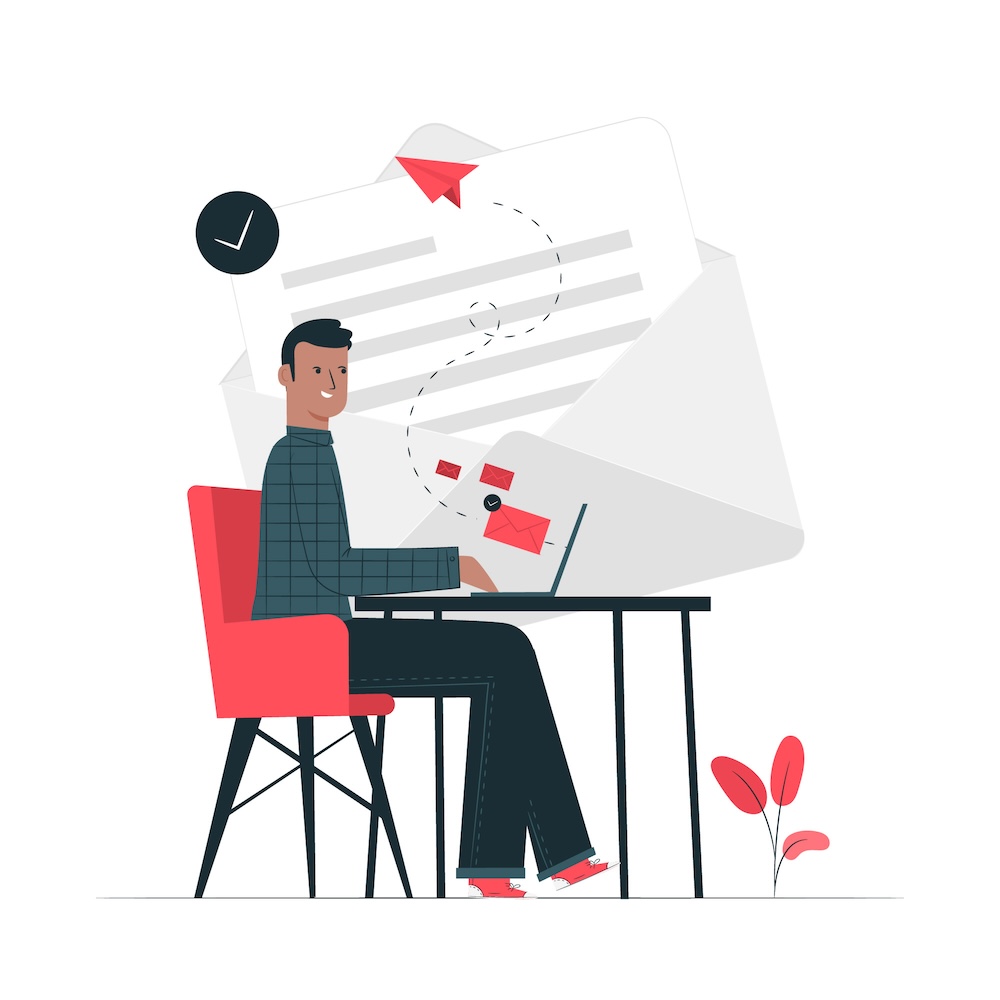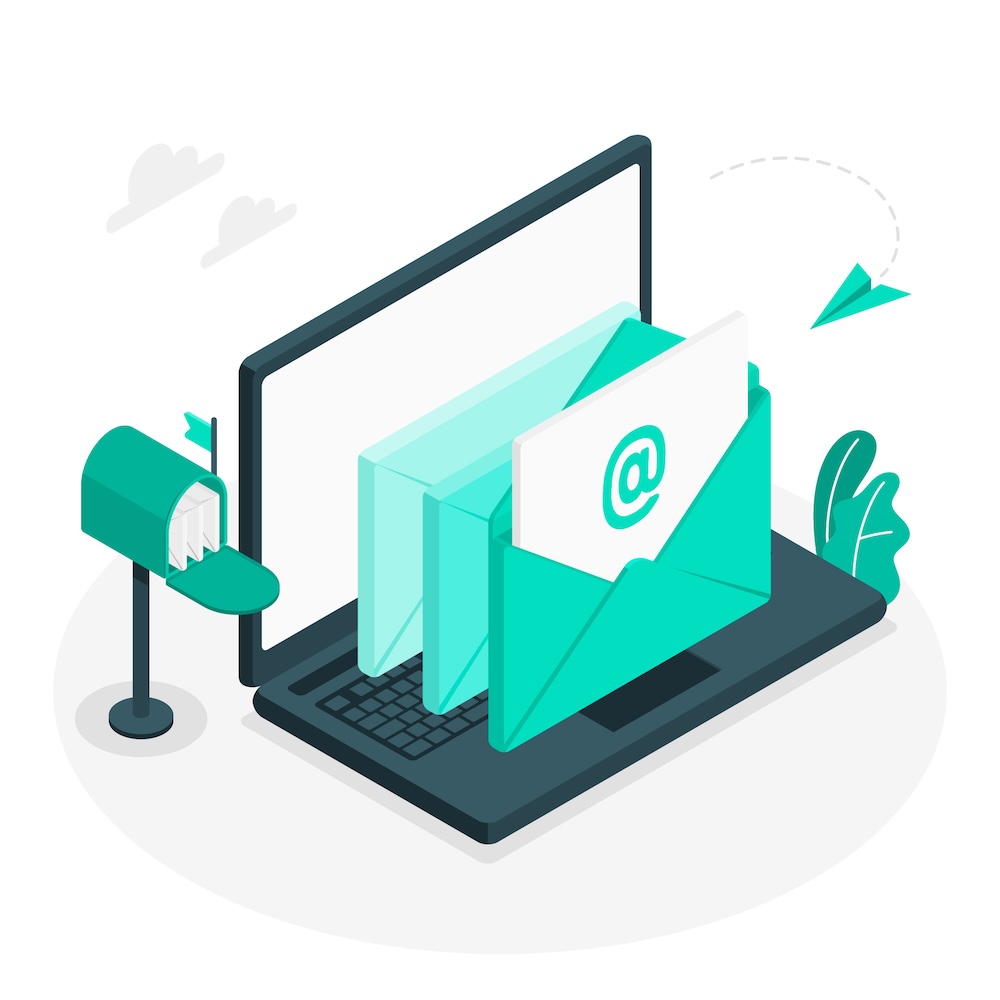
Is there a single more effective and direct method of communicating than sending an email? Think about it. You get immediate, pointed access to hundreds, or even thousands, of people with the click of a button. Compare that to the amount of time, energy, and sheer mental effort it would take to call them all up one at a time, or—worse still—arrange and hold in-person meetings.
The power of the cold email as a medium has produced a significant drawback, however. In today’s hyper-saturated digital marketing landscape, it’s harder than ever to stand out from the crowd. But that doesn’t mean it can’t be done.
Read on to learn more about cold emailing, from a basic, broad-strokes overview to ultra-specific, actionable tips you can start using in your own emails right away. And at the end of the article, you’ll even find a free template you can use to kickstart your own campaigns.
Without further ado, let’s dive in.
Understanding Cold Email Copywriting
At its most fundamental level, cold email copywriting is the skill of crafting email content that will be read by clients or customers who aren’t familiar with your brand or product.
There are a couple of things to take away from this one-line breakdown. The first is that because the people you’re writing to don’t know a thing about you, you need to make sure that first impression lands a knockout blow.
And in today’s day and age, ‘knockout blow’ means enticing them enough to click on a link and learn more about you. (Yes, it really is that competitive out there).
The other main takeaway is that the core of every successful cold email is the content. No matter how pretty the design or eye-catching the color scheme, if the copy itself isn’t top-notch, your emails are going to struggle to be effective.
So, what does effective copy even look like?
Information, Engagement, and the Path Between the Two
Nobody wants to read an email that bombards them with bucket loads of hard facts and statistics.
On the other hand, nobody wants to read one that spends three paragraphs talking about a whole lot of nothing, either. Ideally, you want the prospect to walk (or scroll) away from your email with two main things in mind:
- They need a solid idea of what it is you do or offer (or everybody’s time has been wasted)
- They need to have felt engaged enough by your brand and the language you used that they want to learn more, or at least feel comfortable interacting further
Standing out in a crowded inbox demands a nuanced approach, one that effectively treads the line between being informative and engaging and does so in a sharp, concise, and clear fashion. And the first step to doing exactly that is…
Crafting an Engaging Subject Line
This is your first, and often only, chance to catch the eye of your email’s intended recipient. There are several do’s and don’t when it comes to writing the perfect email subject line, but at a high level, the important things you need to focus on are being clear, compelling, and intriguing.
Clear, because nobody has time to waste struggling through an overcomplicated sentence.
Compelling, because if your idea isn’t strong enough to hook them with the first few words, they’re certainly not going to read the rest of them.
And intriguing, because if you give the whole game away in the subject line, they’ll have no reason to open the email itself.
That last point is often the most overlooked element of subject line copywriting. It’s not enough to have a beautifully crafted sentence—if it doesn’t spark curiosity, it’s not doing its job. With that being said, let’s go through a few more brief Do’s and Don’ts:
Do…
- Use active rather than passive language. “Double your profits” vs “Your profits could be doubled”, for example.
- Keep tone of voice in mind. C-suite execs probably won’t appreciate emojis; move-fast-and-break-things startups don’t want to be bored to tears with stuffy language.
- Make sure every word is spelled correctly. Bonus points if you double-check that you haven’t made any basic grammar mistakes.
- A/B test. You might love a particular line you came up with, and it might fail miserably when compared to other alternatives. If you’re not testing, you can’t know for sure what works and what doesn’t.
Don’t…
- Overplay your hand. When it’s a cold email, you don’t know them and they don’t know you, so don’t get overly familiar or act like you’ve got the sale in the bag.
- Bait and switch. Nothing’s a bigger turn-off than being promised one thing in the subject line, only to find out it’s not true in the rest of the email. This goes double for if you’re promising something for free, only to reveal it actually costs money.
- Be annoying. Being funny is great. Trying too hard to be funny, not so much. If you’re wondering which side of the line your line falls in, err on the side of caution and keep it simple.
- Experiment. Think you’ve got the angle nailed? Great: it still won’t kill you to try out another style. Coming up with a range of approaches and testing them accordingly will give you a much clearer picture of what works and what doesn’t than blind trust.
Writing the Email Body
The email itself should be as punchy, impactful, and consistent as possible. It can be broken up into three main sections:
The Opening
The opening of your email should continue on from the subject line, since that’s really where the whole narrative flow began. But unlike the subject line, this is decidedly not the time and place to get creative.
Start with a greeting that feels personal, but also audience-appropriate, and don’t beat around the bush. Greet the prospect, introduce yourself, and then get down to brass tacks.
The Body
This is your best chance to be informative, and you should seize it with both hands. Whether you’re introducing a product, requesting a demo, offering a service, or anything else, it’s always good to be transparent.
People know that cold emails are trying to sell them something. Obscuring the point of your outreach isn’t going to make you seem more trustworthy. On the contrary, it’s far more likely to accomplish the polar opposite.
Once you’ve communicated what the point of your email is, you have a few sentences, max, to sell its value. The question of how to do exactly that is the one that the entire field of copywriting has been trying to figure out for decades, and as such is regrettably beyond the scope of this article. But generally speaking, the same advice applies: keep it tailored to your audience, keep it transparent, and keep it compelling.
Don’t be afraid to think outside of the box at this point, either. Copywriting is a creative discipline, after all—you can break any rules you like, as long as the results you bring in back up your decision. So why not be bold?
The CTA (Call-To-Action)
Once you’ve introduced yourself, made clear what you’re offering, and hopefully sold that offering to the best of your abilities, it’s time to close out your cold email in the strongest possible way.
A well-defined CTA basically makes everything easier for your prospect by showing them exactly what to do next (convert), how to do it (by clicking the button), and even when to do it (now!).
Here’s the first moment where design can really make or break your cold email. If the CTA is ugly or hard to find, it doesn’t matter how great its language is—it simply won’t convert. And on the topic of language choices, it’s always good to keep everything as active and actionable as possible.
Consider these two examples:
- “Buy now” vs. “Purchase”
- “Join waitlist” vs. “Sign me up to the waitlist”.
Can you see the difference? In the first example, the first is direct and urgent, while the second is passive and vague. And the inclusion of “me” in the second example adds a personal touch that the prospect will pick up on subconsciously, building that much more of a connection with them and ultimately increasing the chance they’ll convert.
Closing the Email
It’s perfectly possible to end the email on the CTA itself. But if you’d like to go ahead and leave a final touch, that’s common practice as well. There’s not a whole lot to be said about this section, because the bulk of the heavy lifting should already have been done by the rest of the content up to this point.
A simple thank you can often be all you really need. You could also remind the reader of the CTA, mention that you’re looking forward to hearing back from them, or include your own email so it’s easy for them to copy-paste and reach out to you with any questions or queries they may have.
An email closer should reduce friction, never increase it. Follow that rough strategy and you won’t go too far wrong.

Free Template
Now that we’ve gotten through the basics of cold email copywriting, here’s a free template to get your cold email copywriting journey started off on the right foot:
Subject Line:
“Breaking Down New Doors For [Recipient’s Company Name]”
Opening:
Dear [Recipient’s Name],
I’ll get straight to the point. My name is [Your Name] from [Your Company Name], and I’m reaching out because I’ve been impressed by [something specific about their company or recent achievement]. And there might just be a unique opportunity here for us to work together.
Body:
Our team at [Your Company Name] specializes in [description of your product/service and its core value proposition]. We’ve helped dozens of businesses like yours [mention a key benefit or a problem you solve] through [mention your method or technology].
Call to Action (CTA):
Would you be free for ten minutes next week to hop on a quick call and talk through some high-level ideas?
Closing Line:
I’m looking forward to hearing back from you and hopefully connecting on Zoom sometime in the coming days.
Warm regards,
[Your Name]
[Your Position]
[Your Company Name]
[Contact Information]


